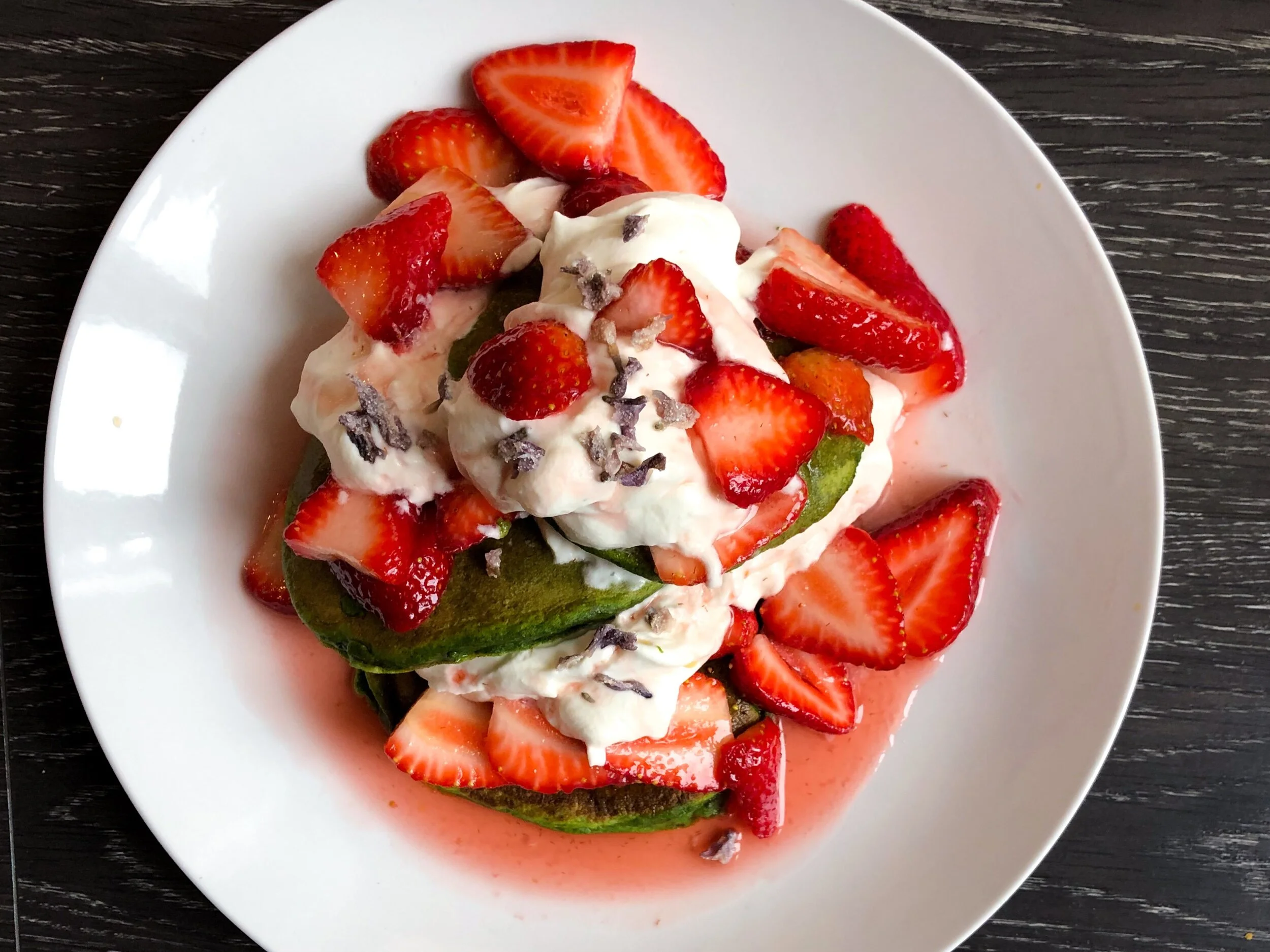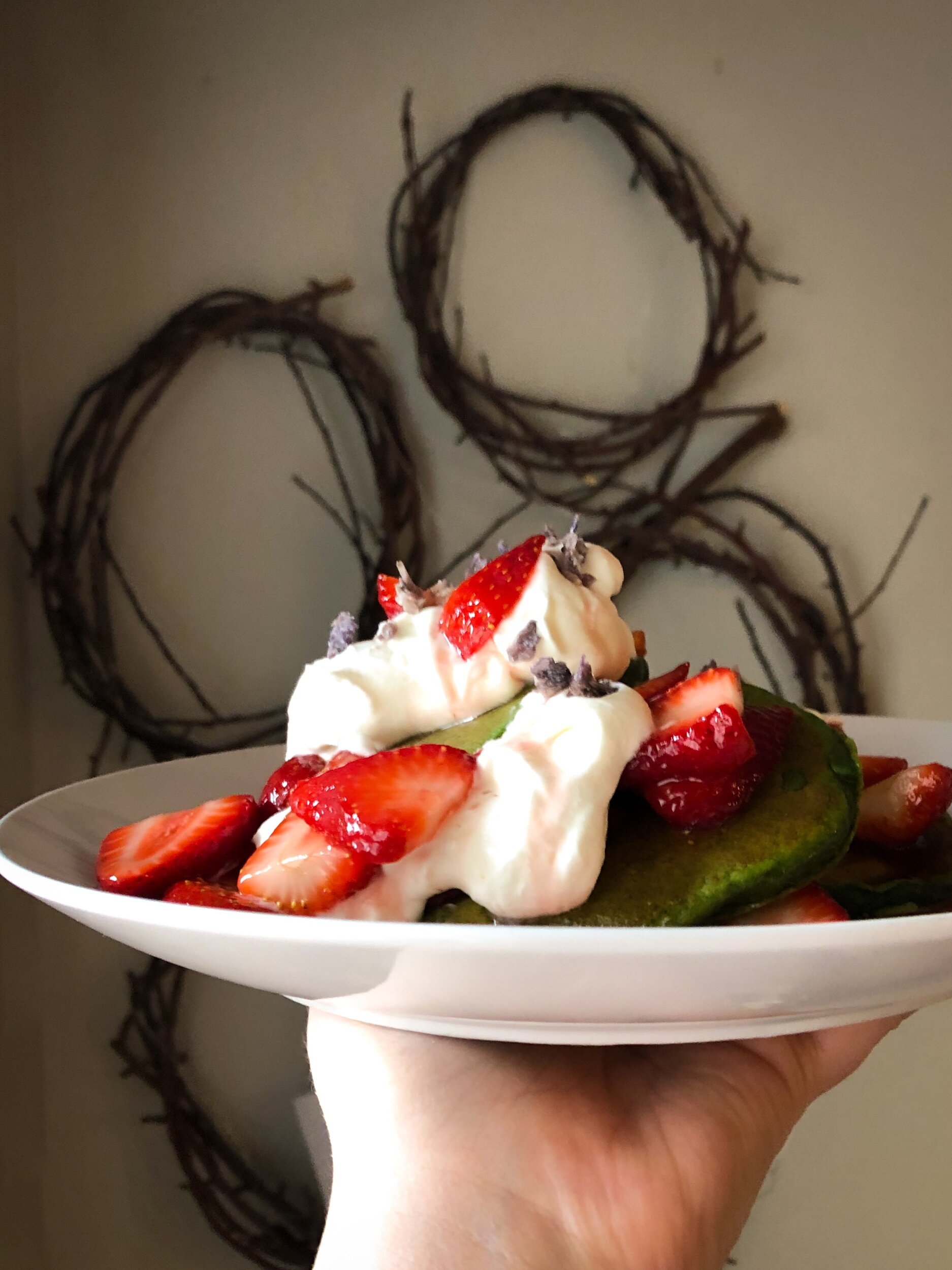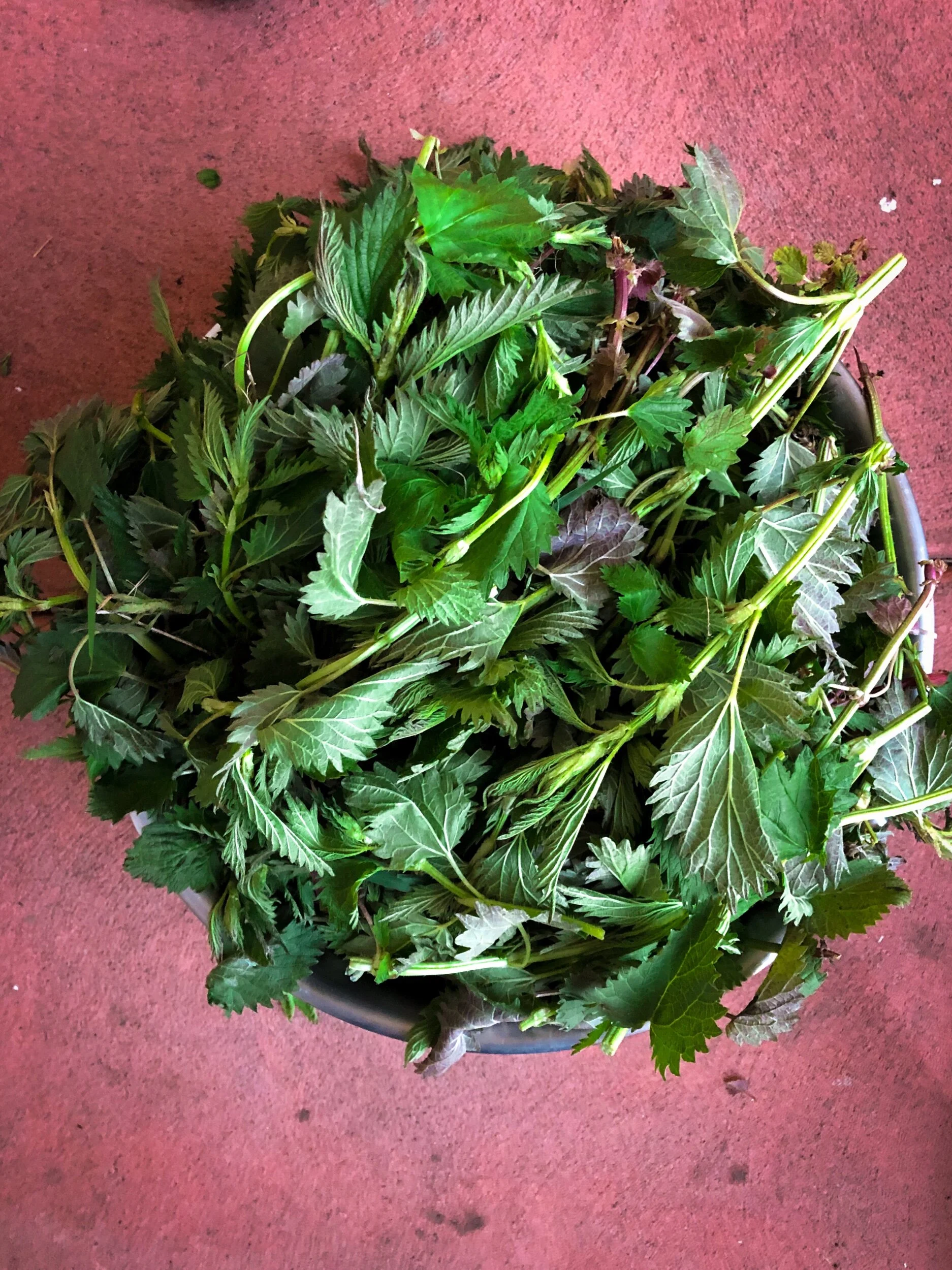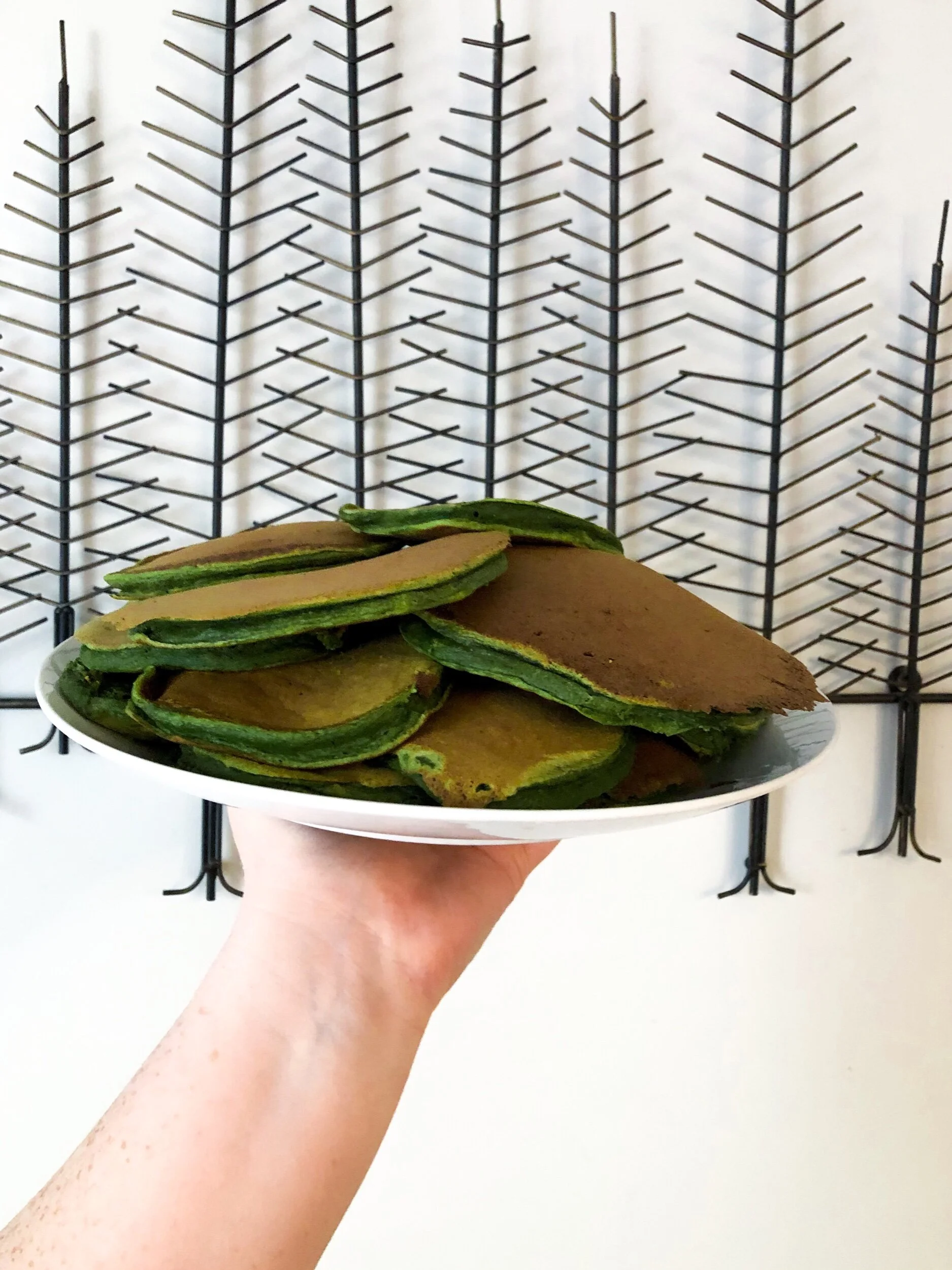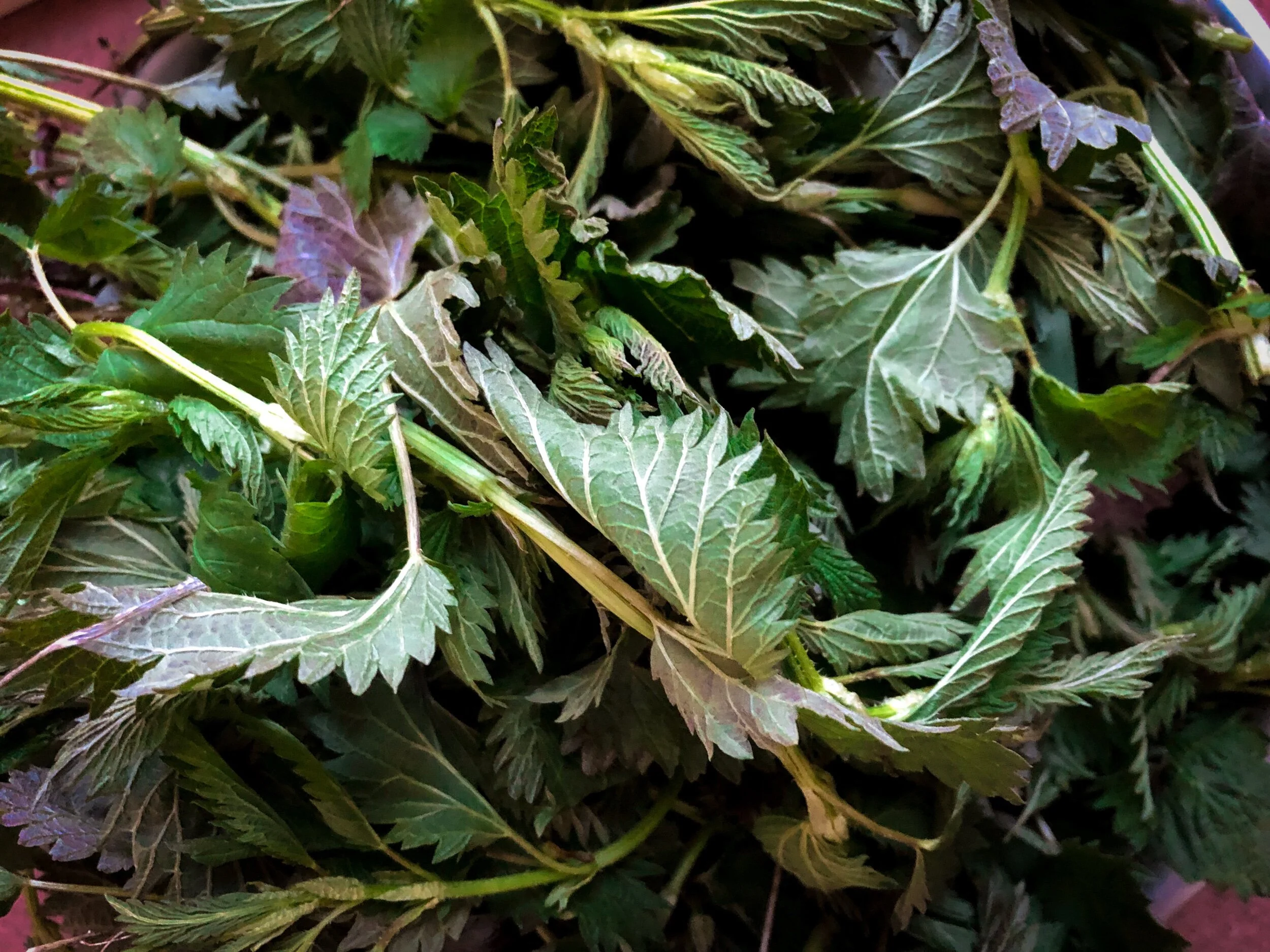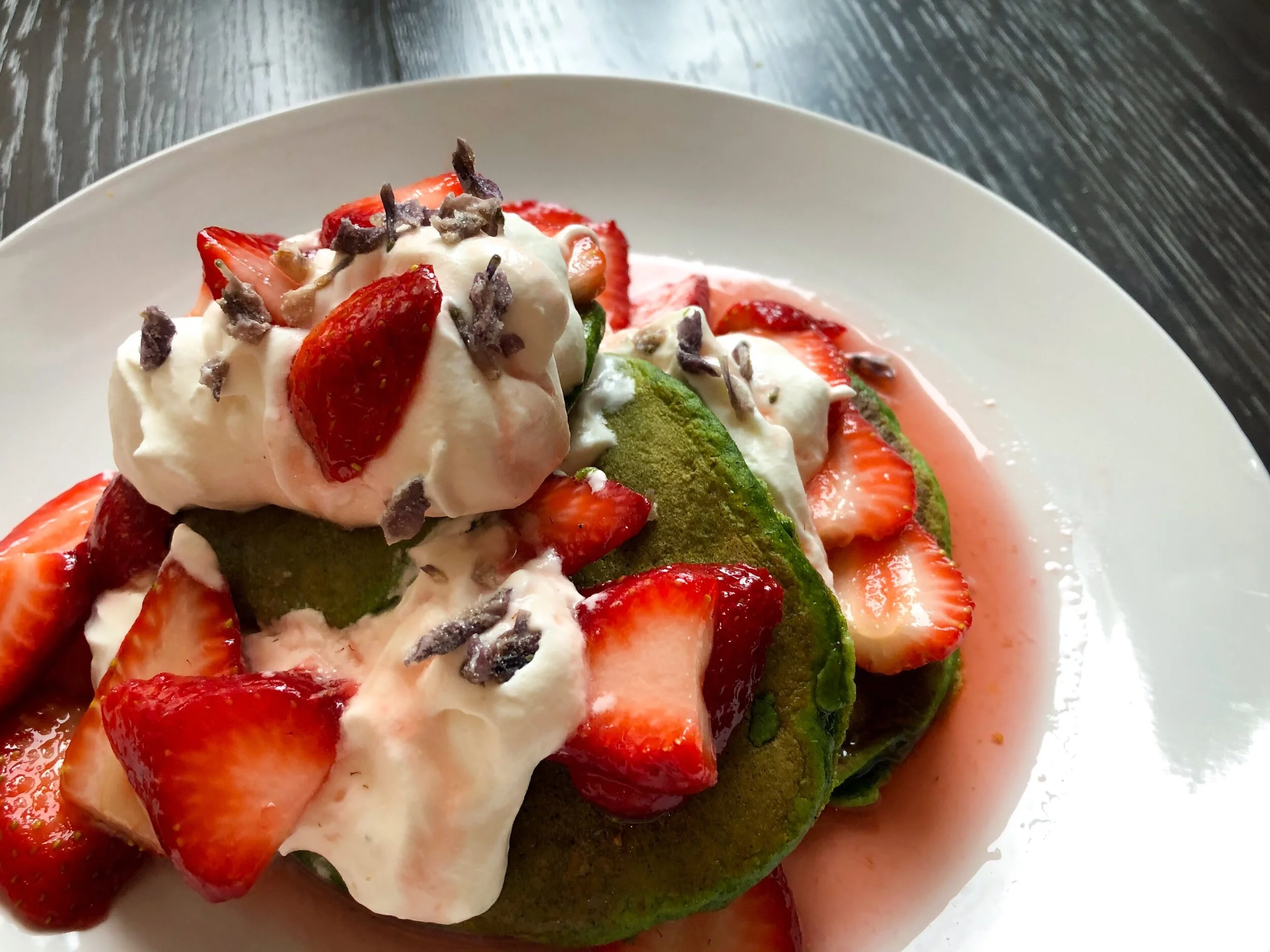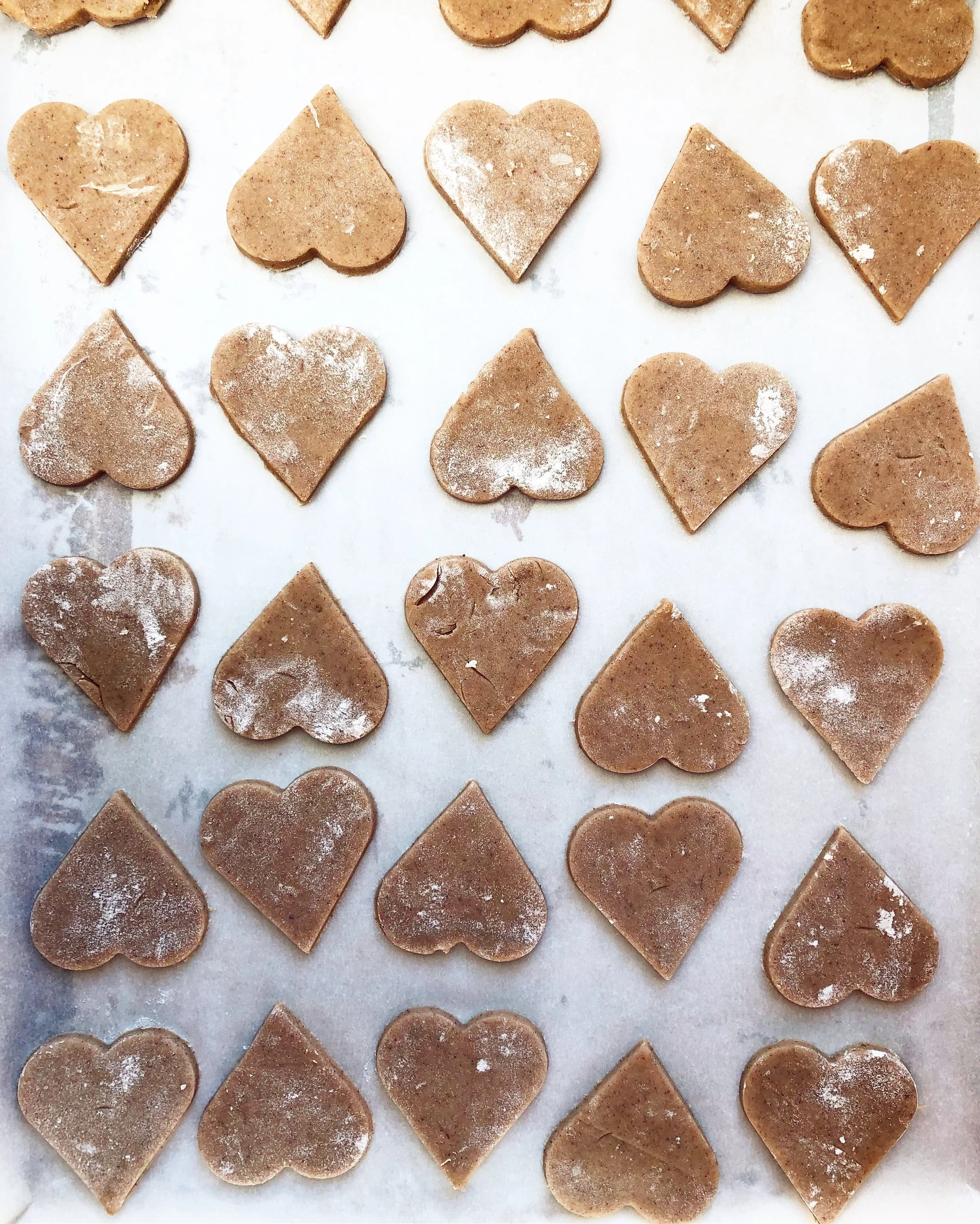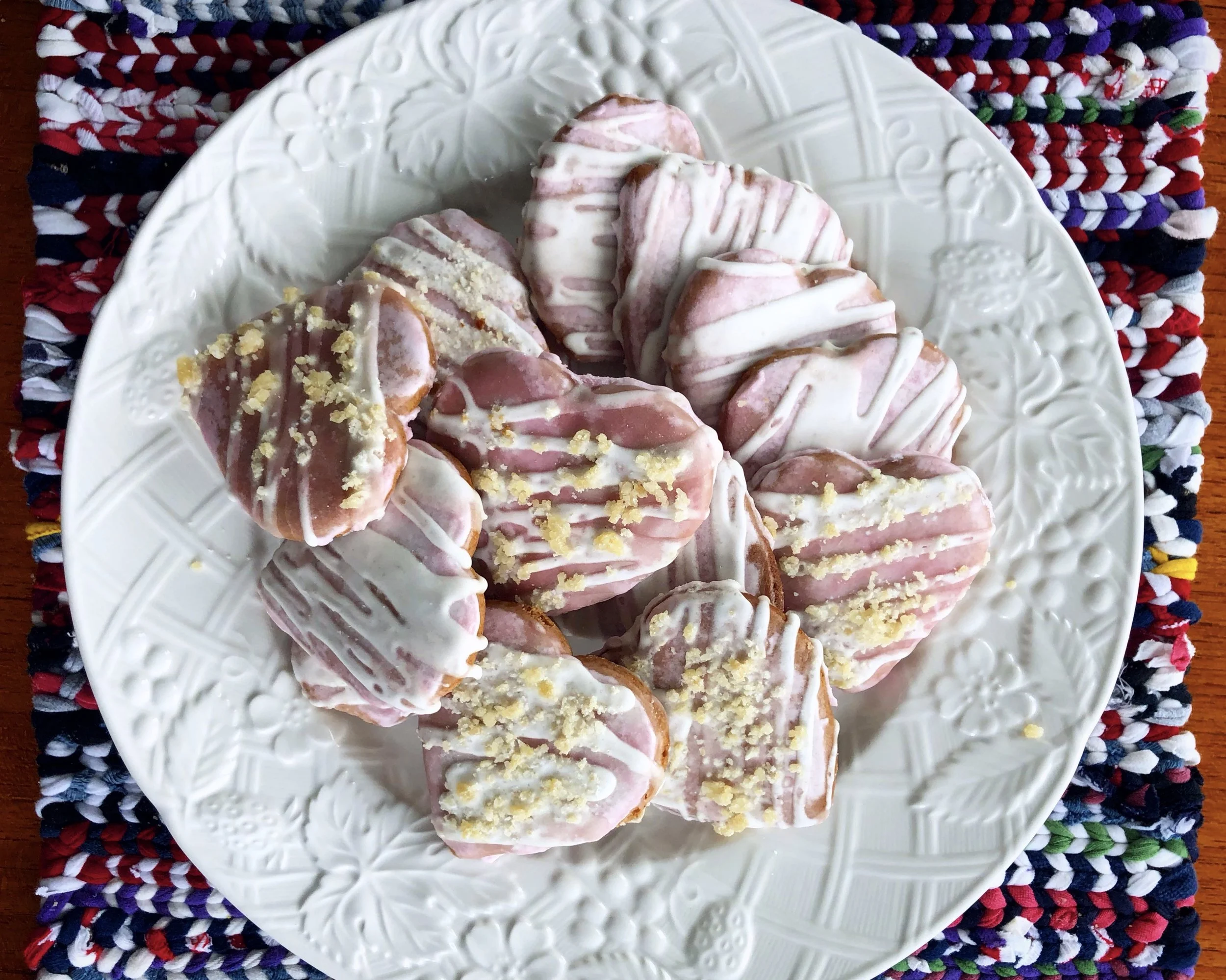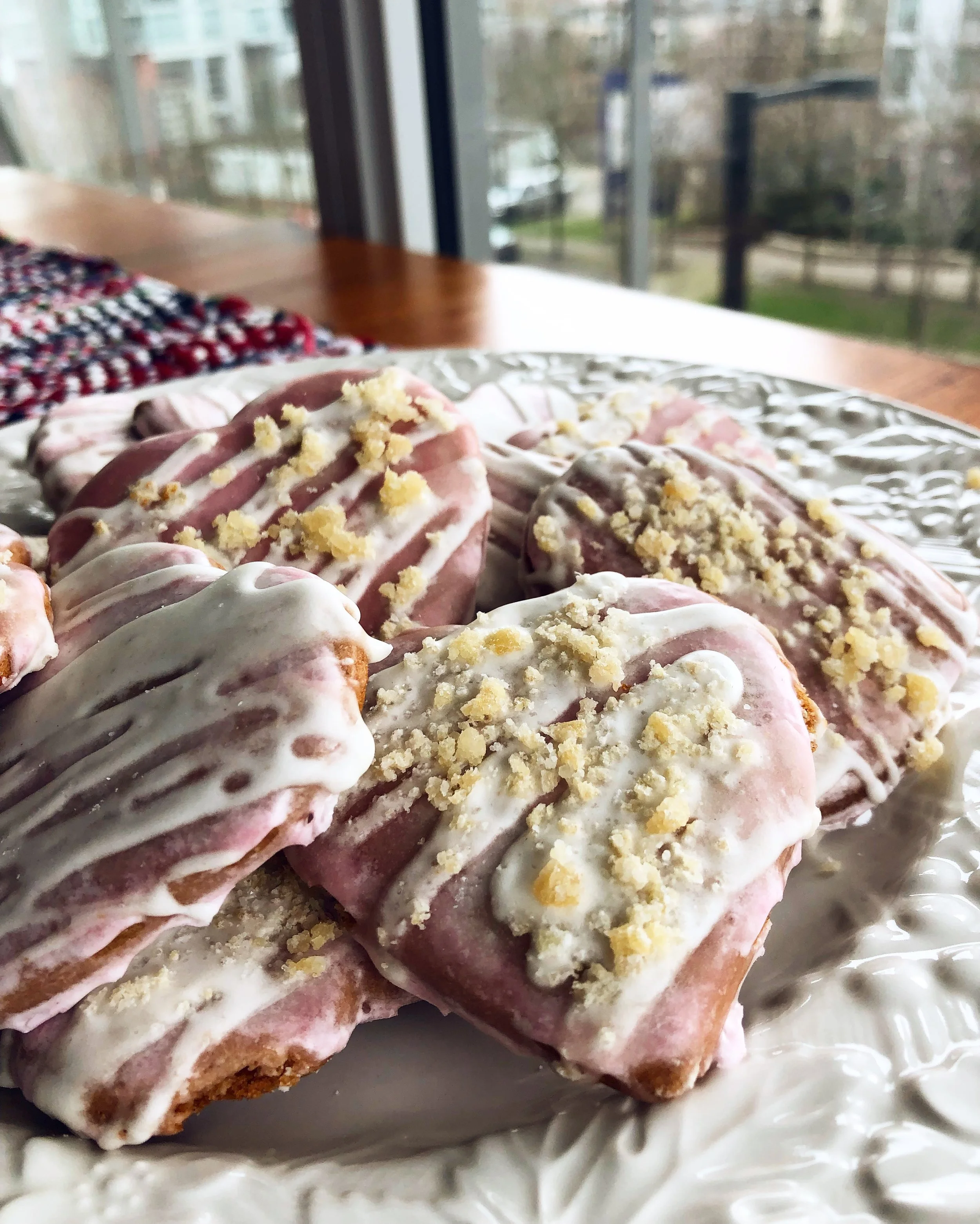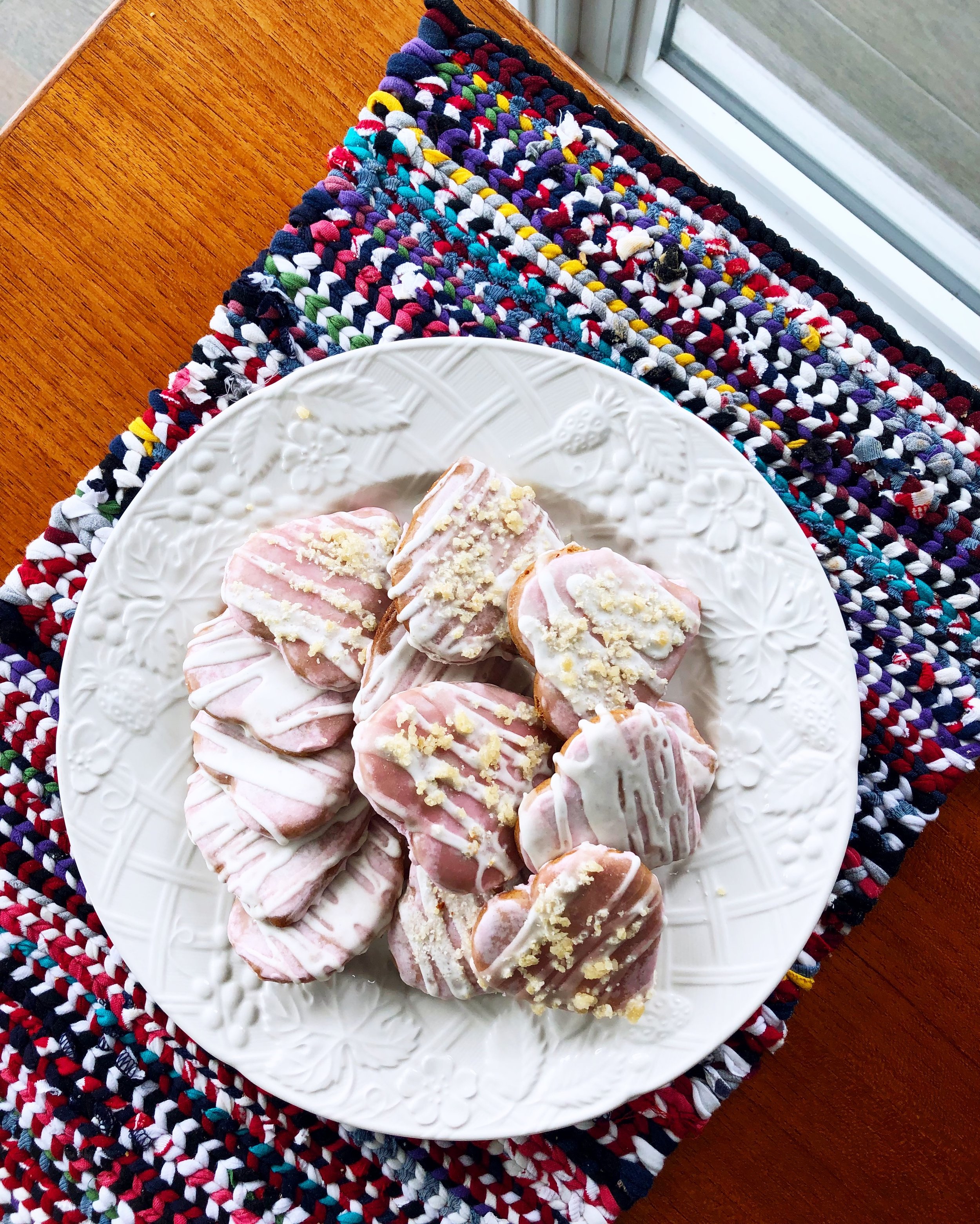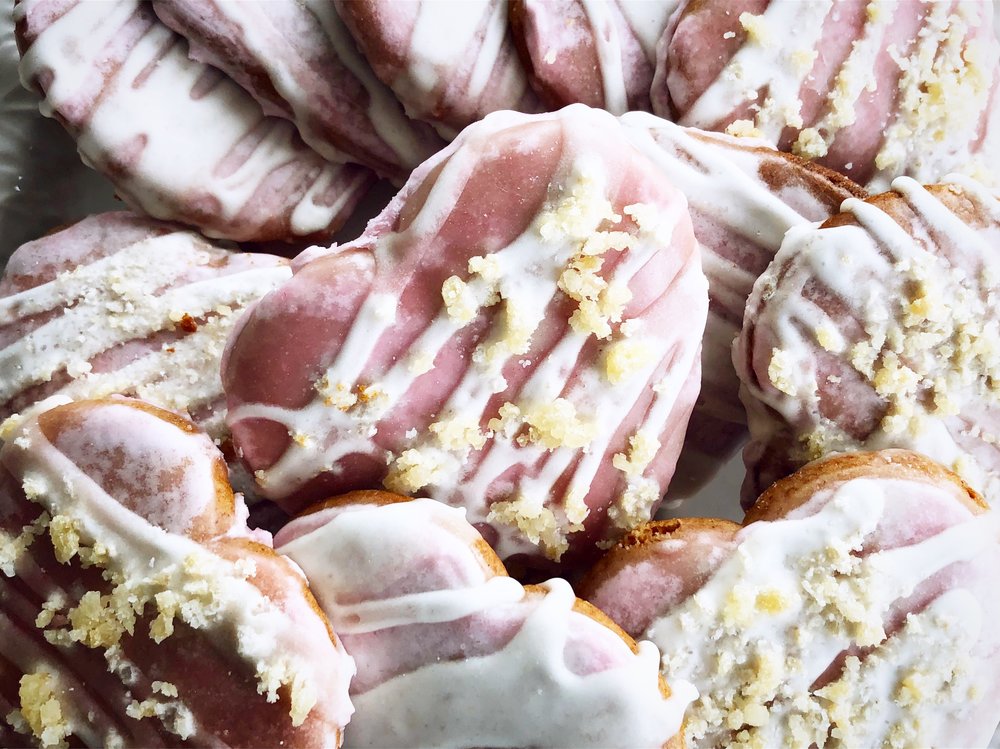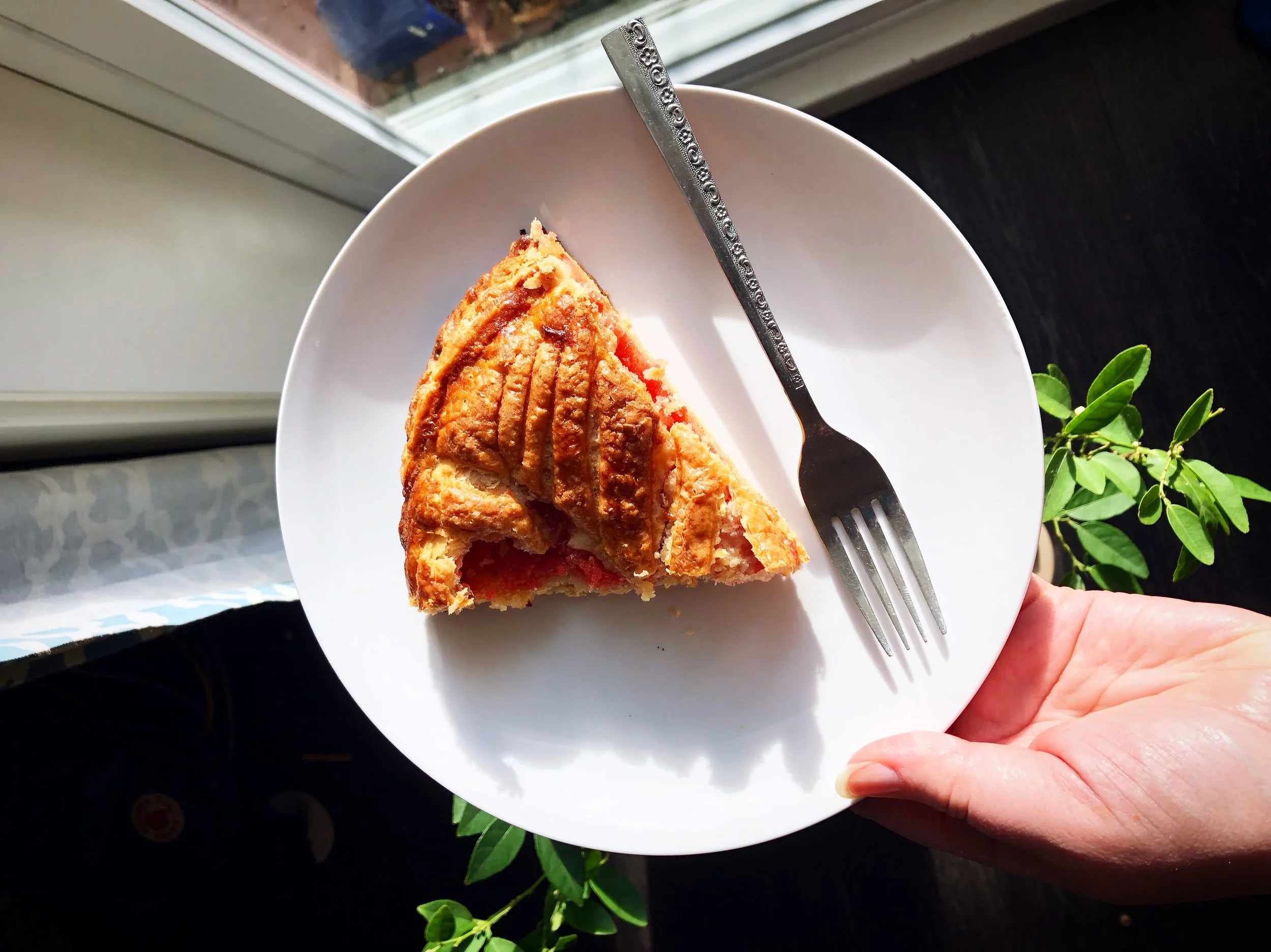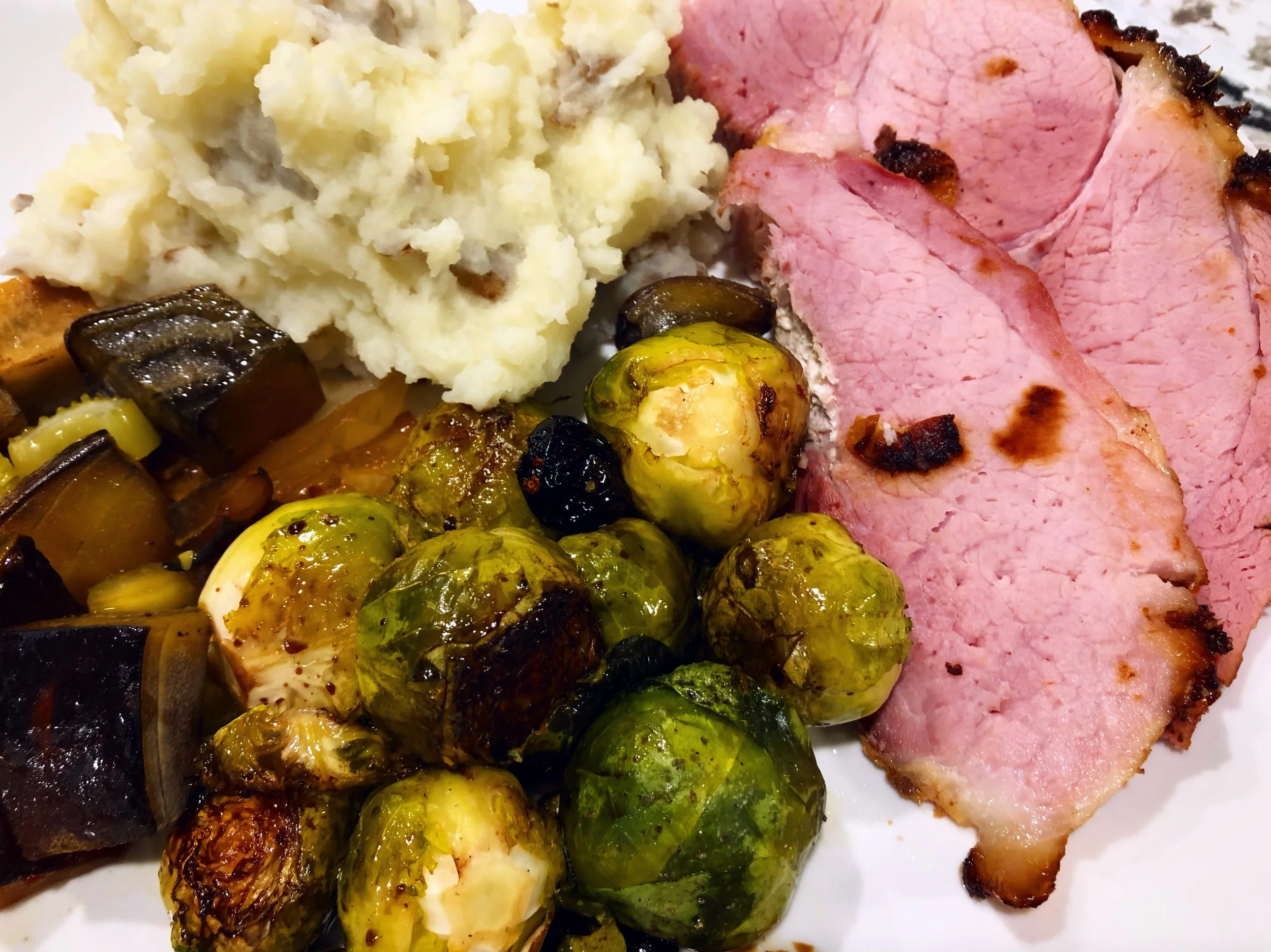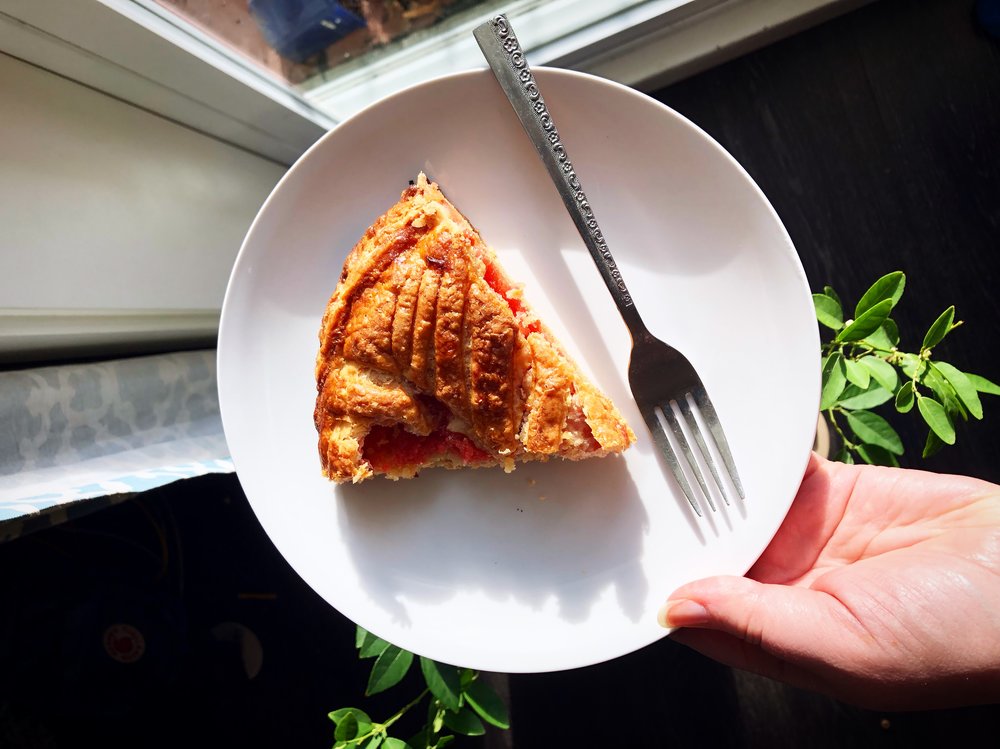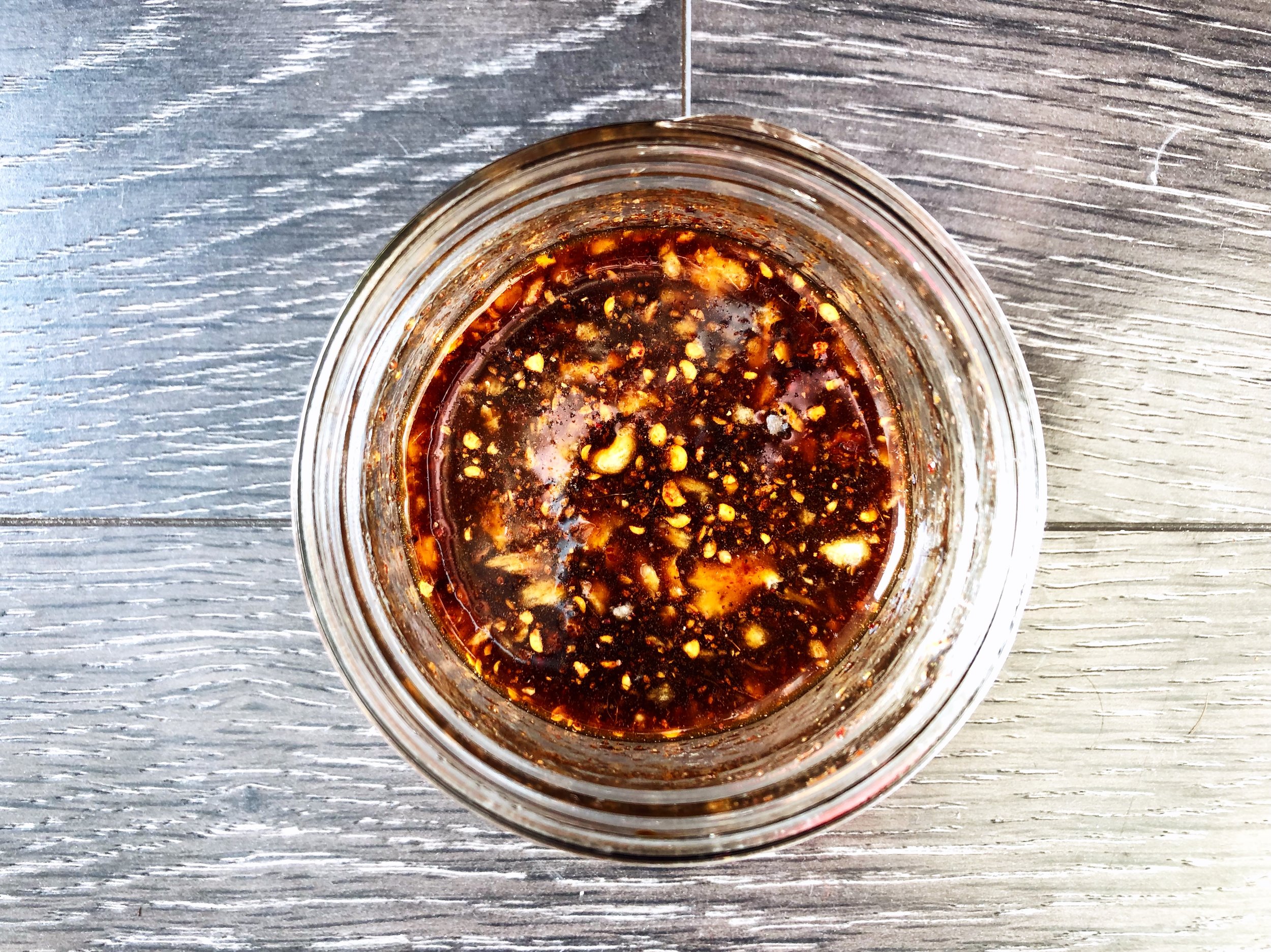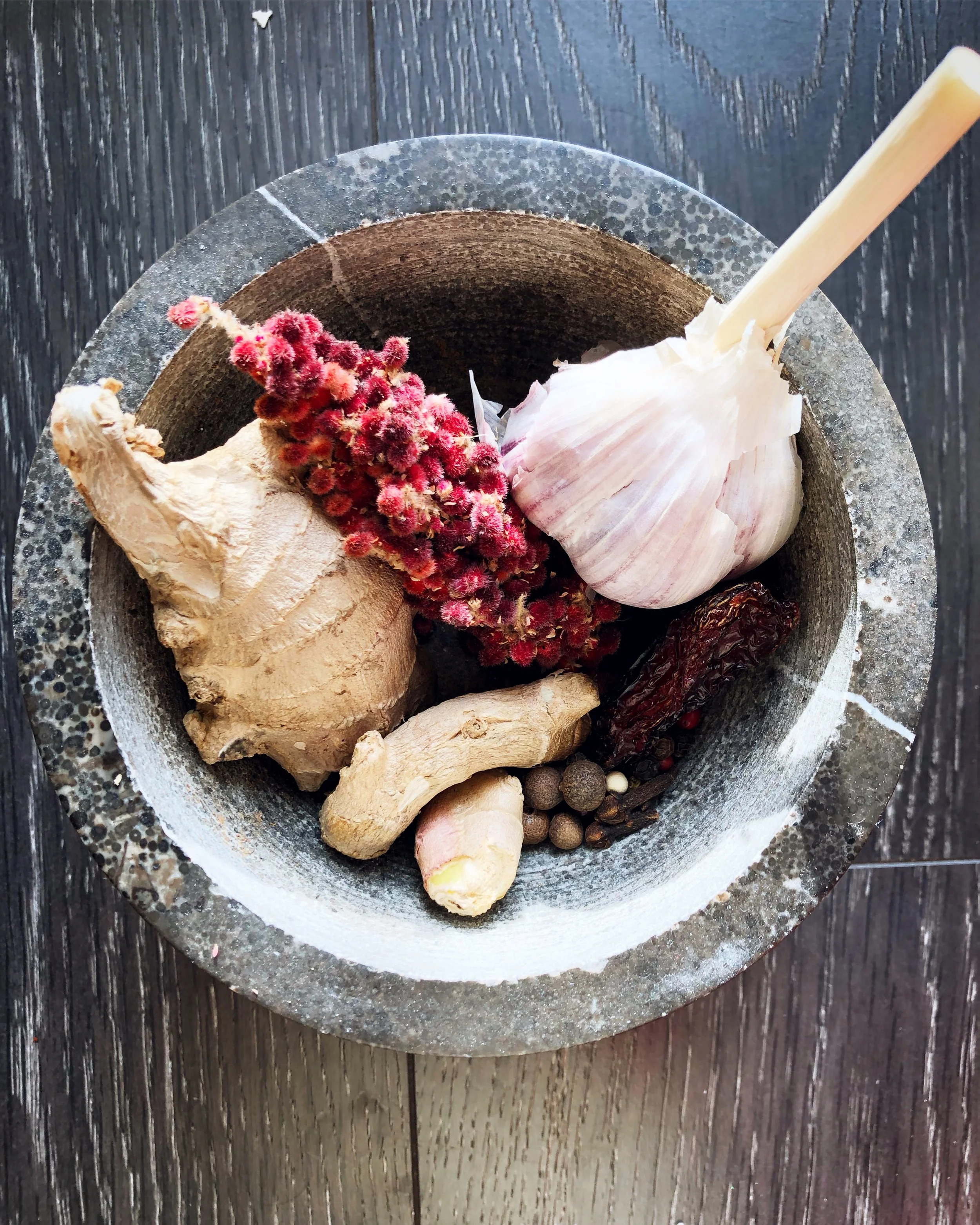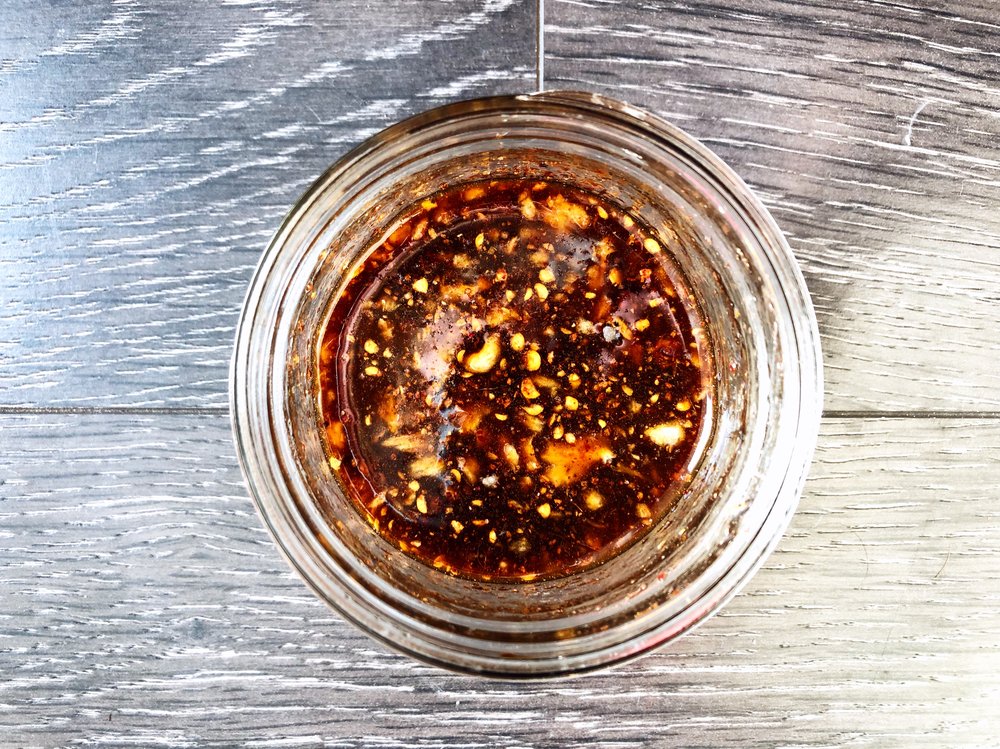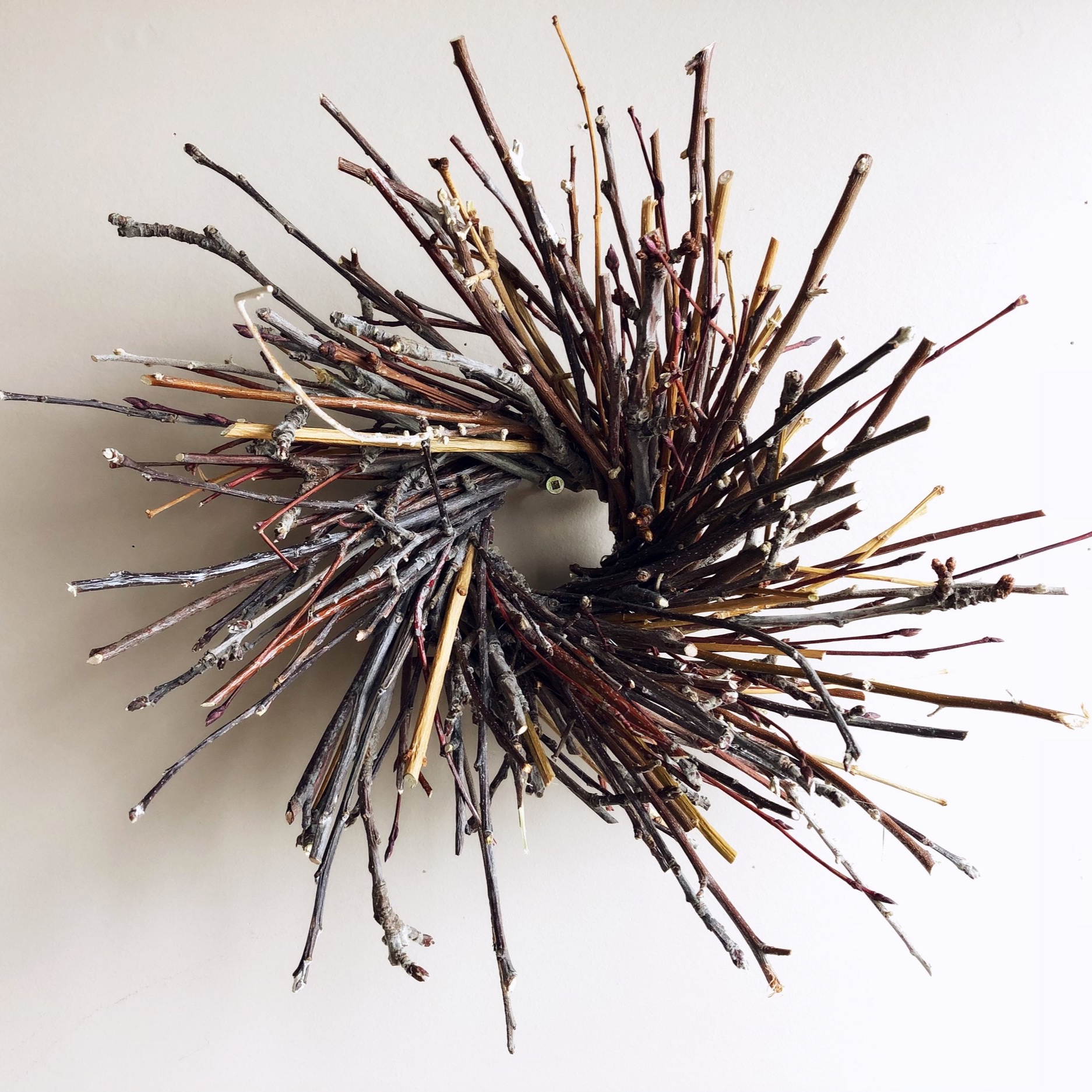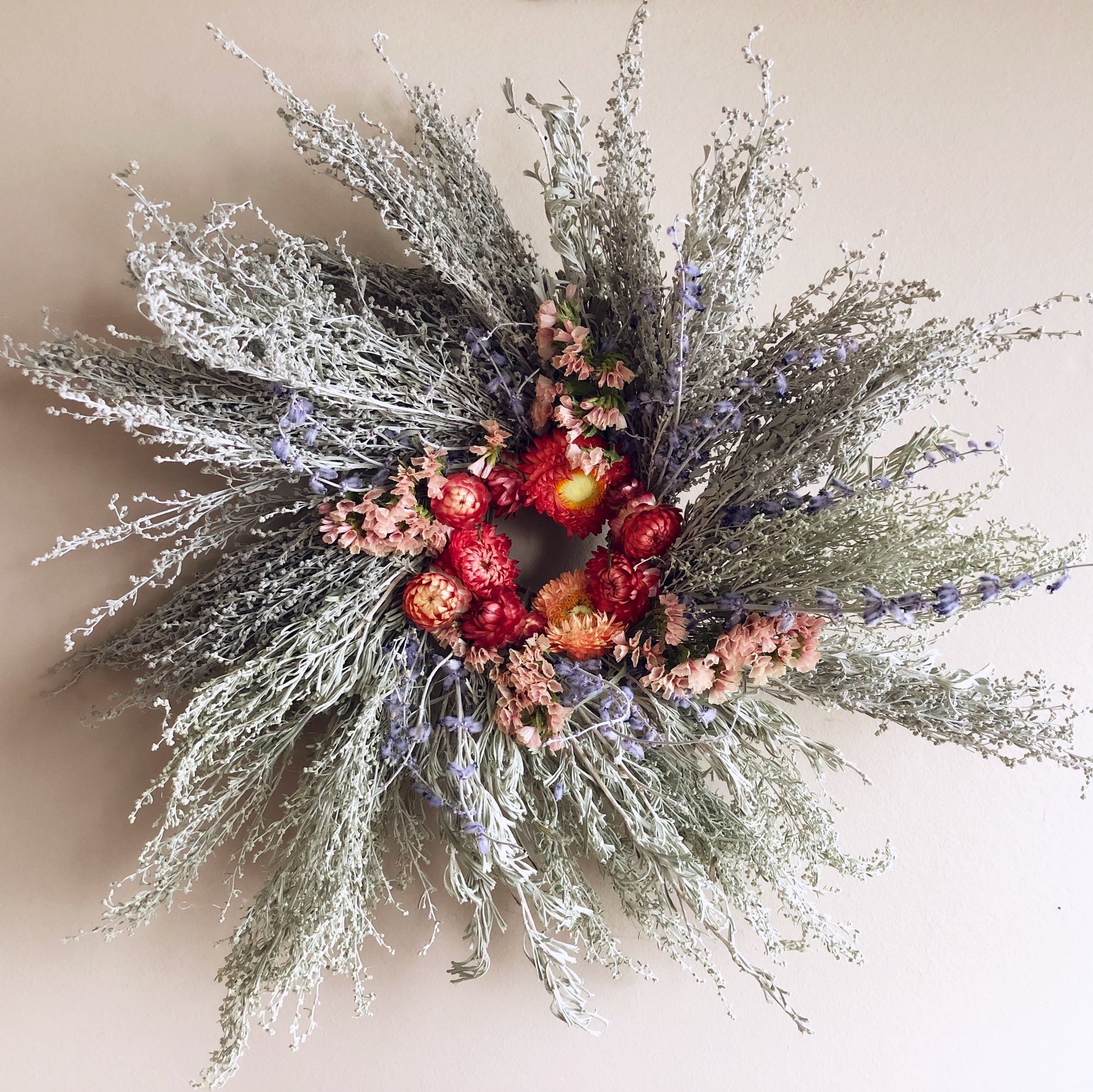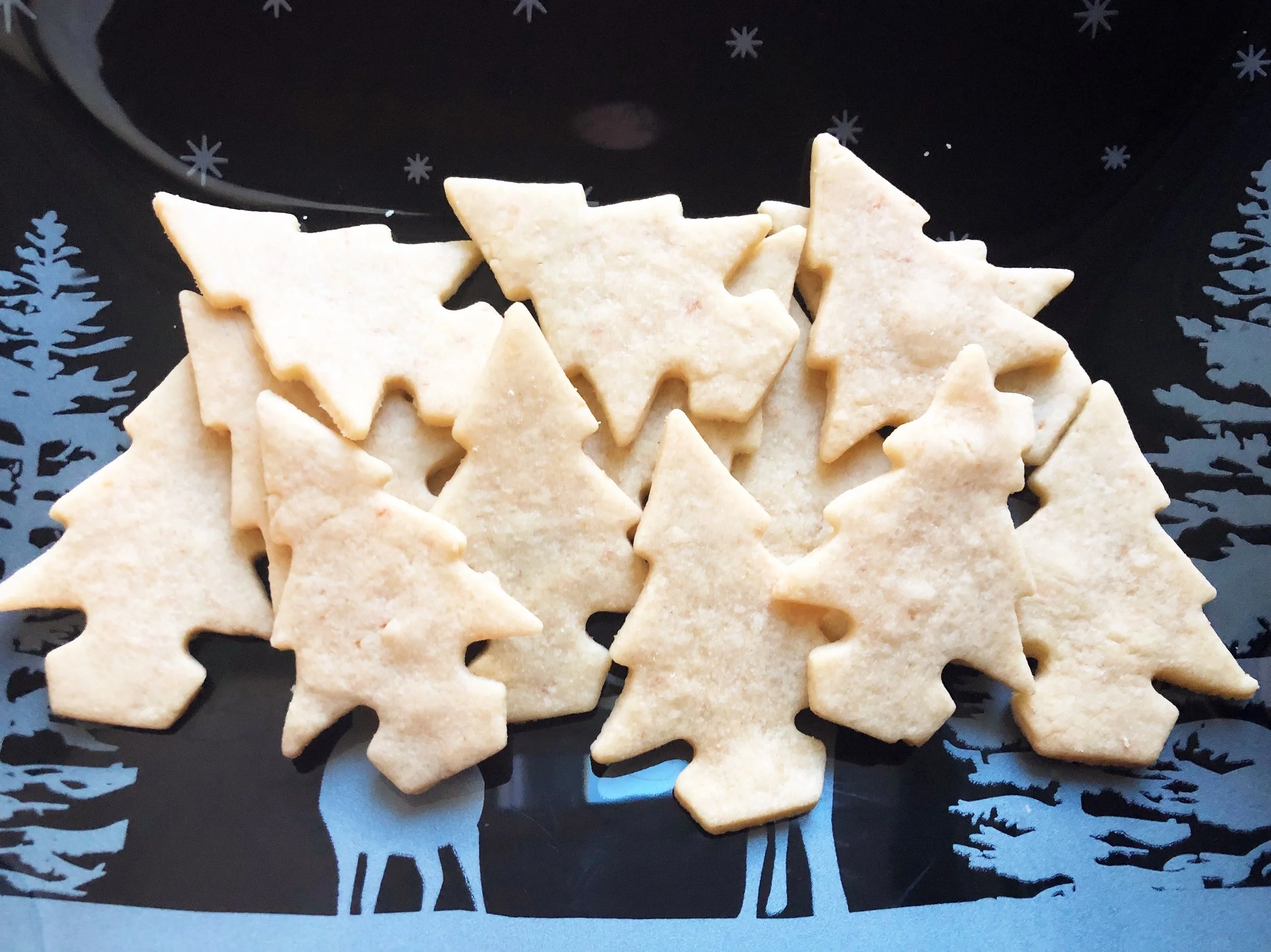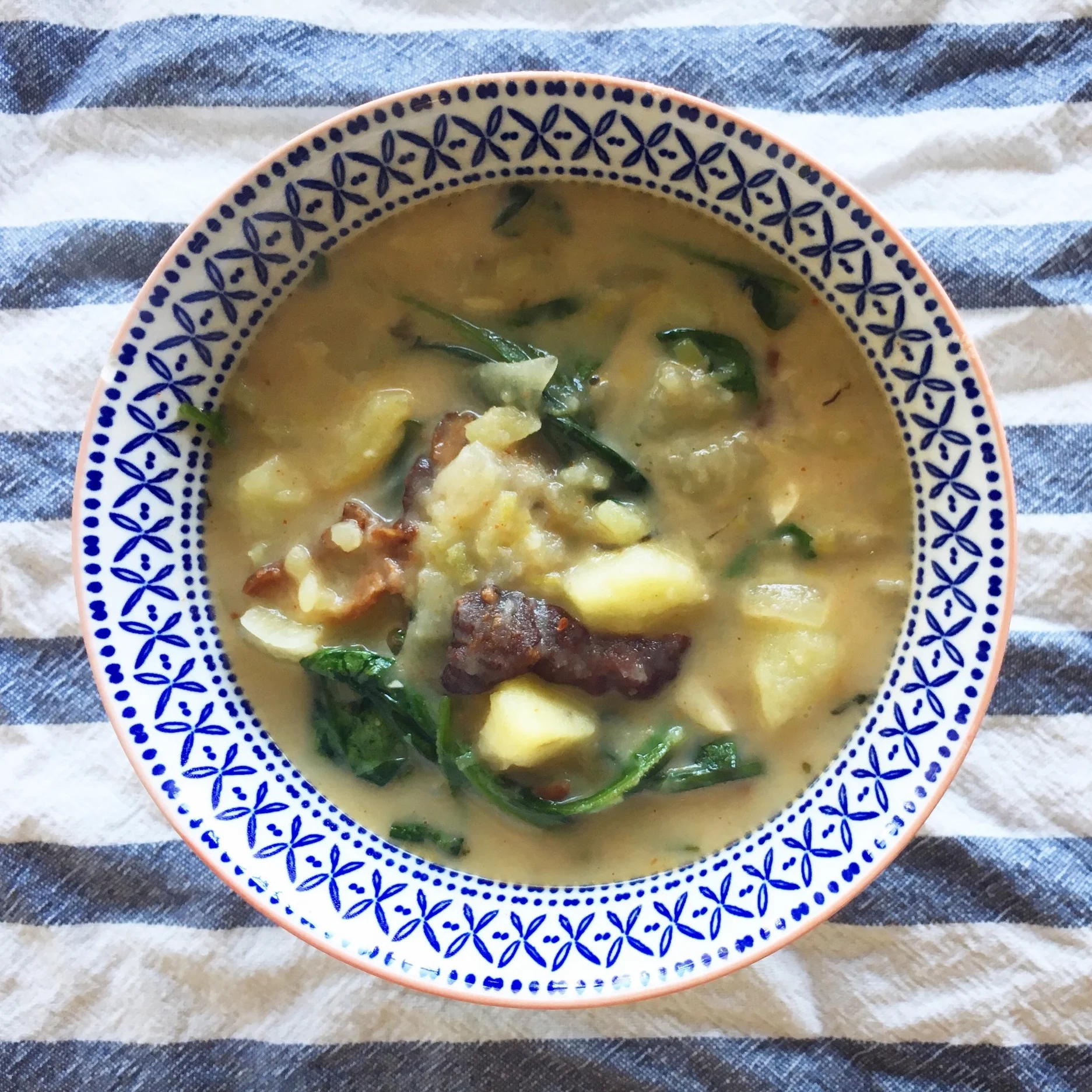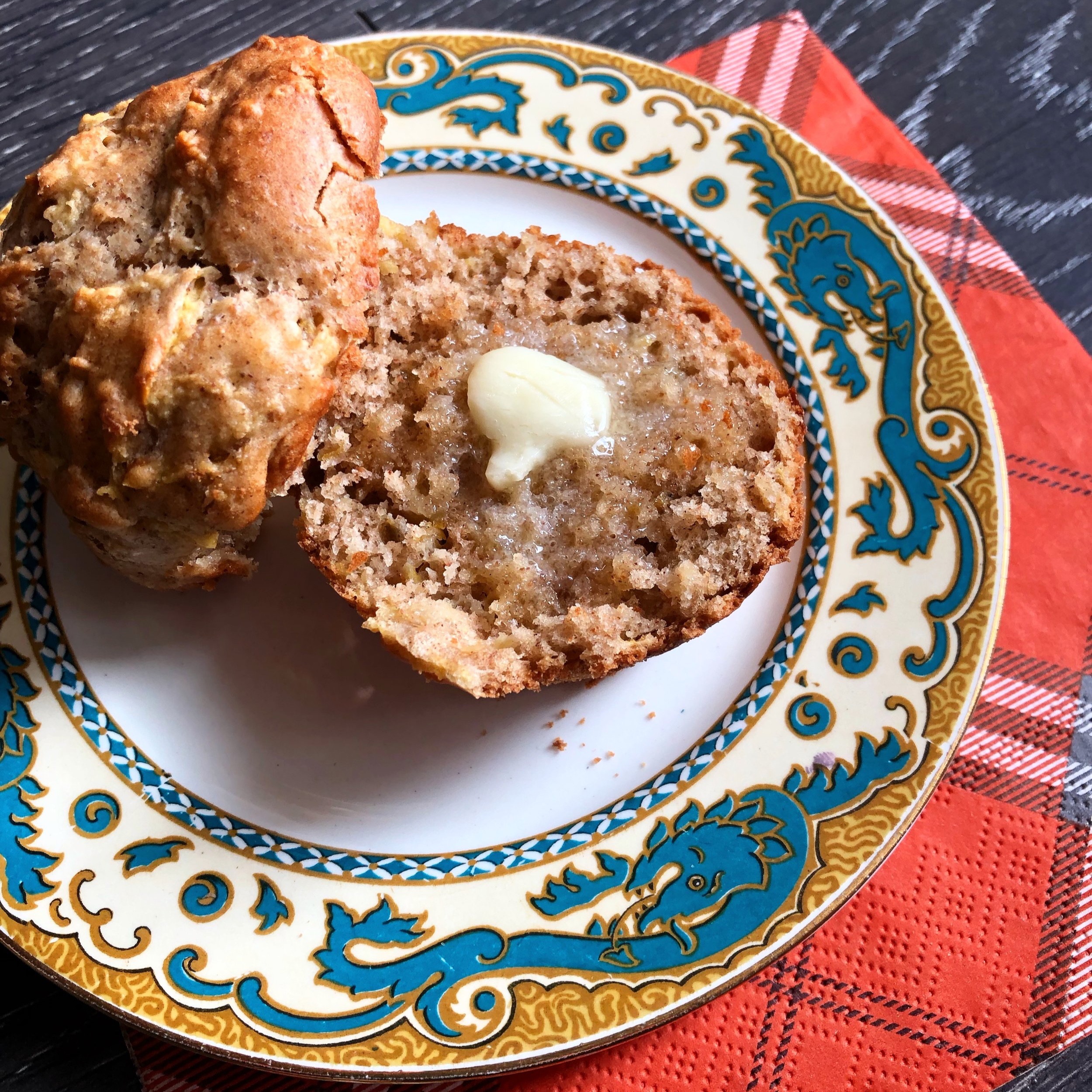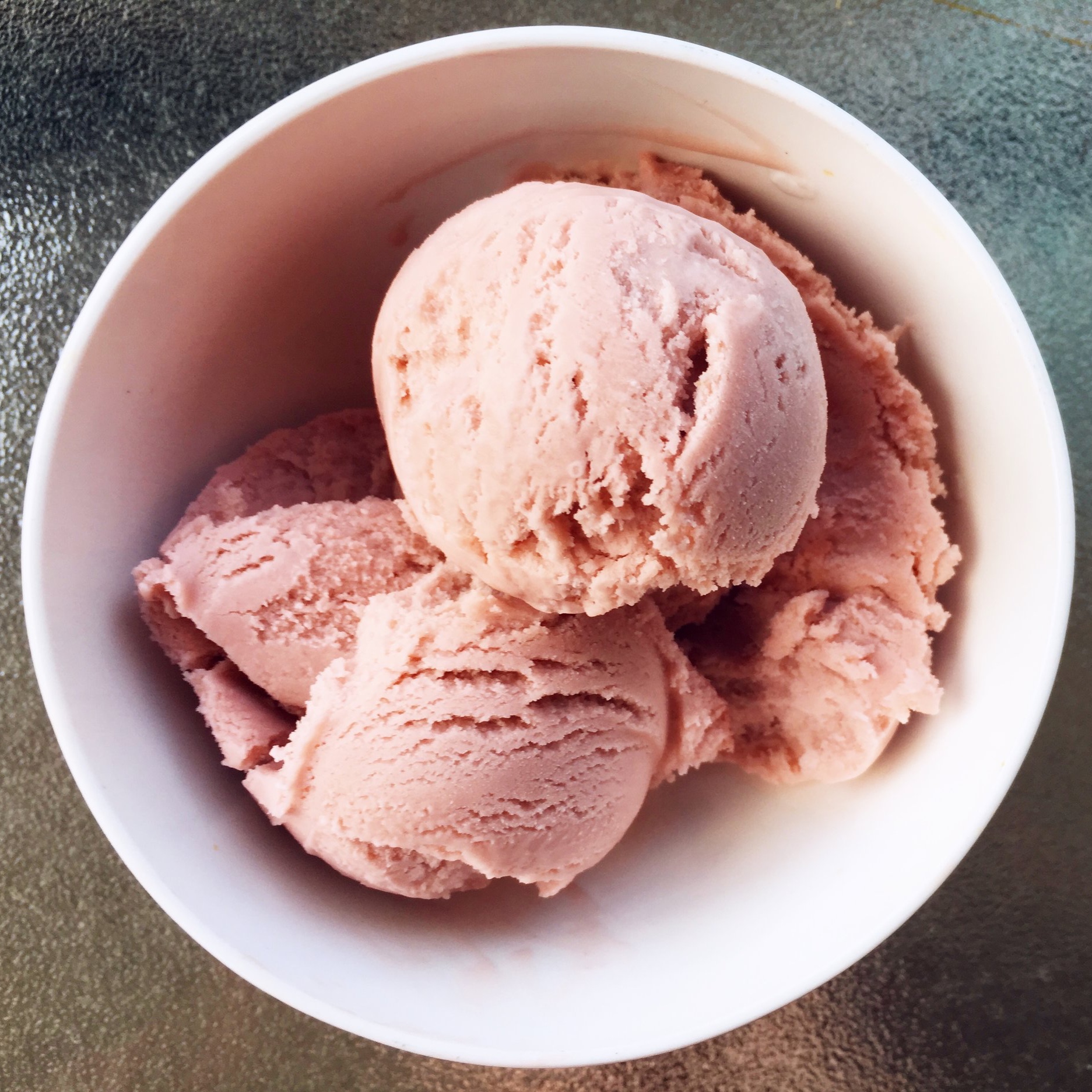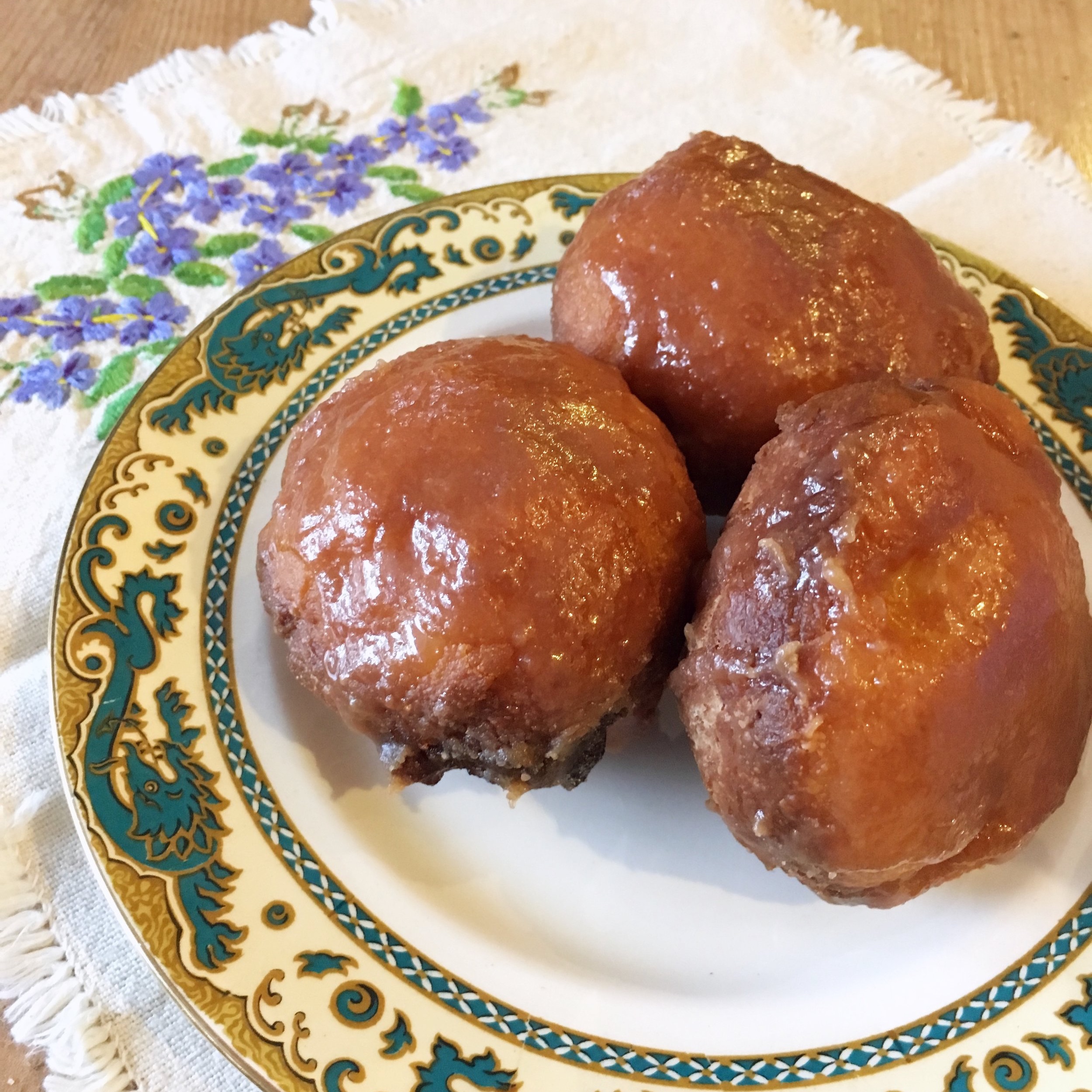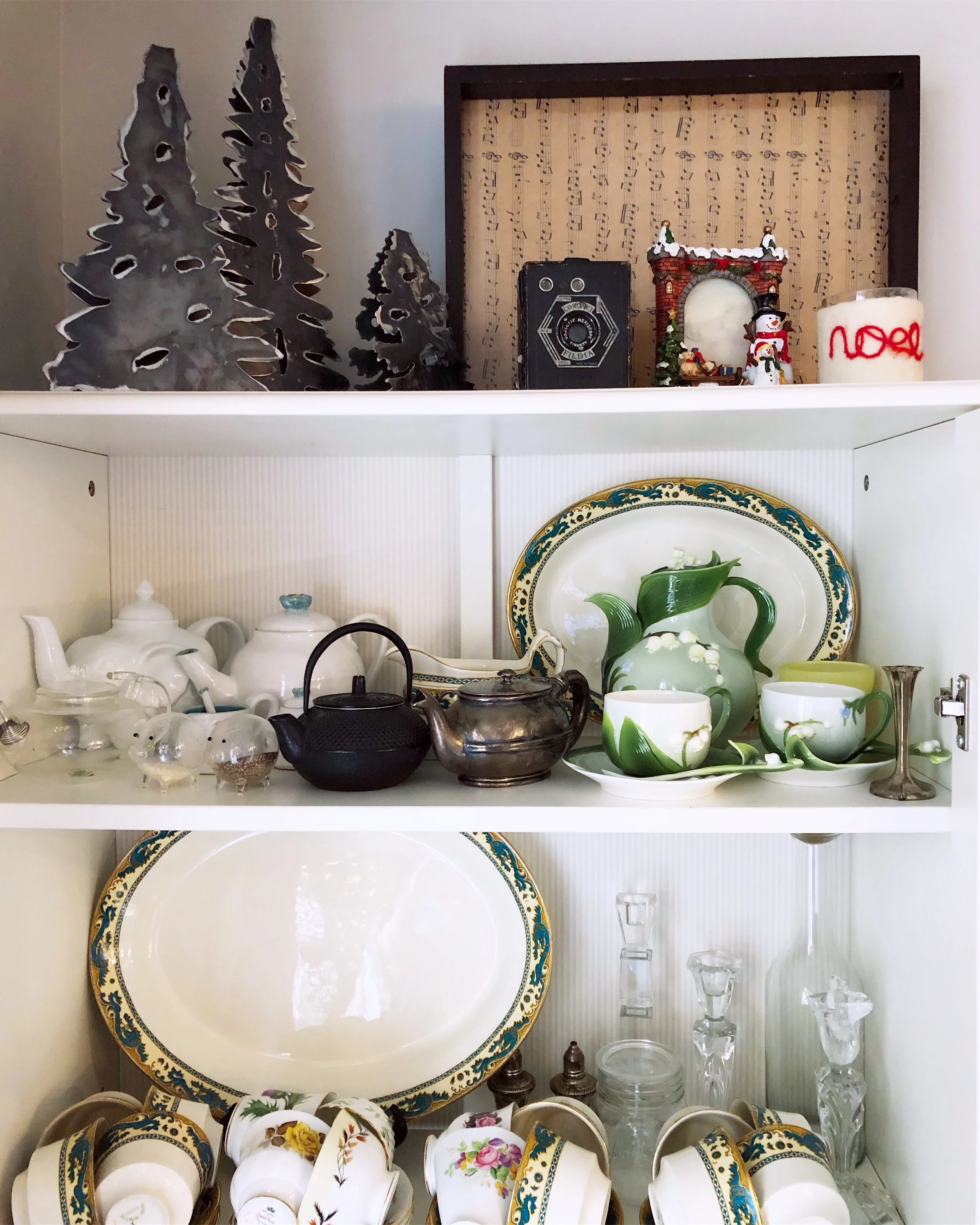Nettle Pancakes
Springtime is almost here! Or at least here in Kamloops we’re still waiting for the last of the snow to disappear, but I know from my newsfeeds that many of you live in warmer places. Some of you are even enjoying your first nettle harvests! Since I had a few cups from last year stashed away in the freezer I thought I’d share a recipe that woulds satisfy my craving for spring flavours, and maybe give you some inspiration.
There are a few recipes that I feel are my family legacy, and pancakes is definitely one of them. Big pancakes breakfasts have such a strong association with family for me that we decided a pancake brunch was the perfect meal to serve at our wedding. This recipe is strongly based on my mother’s, but with quite a few tweaks.
You might be wondering - why nettles? Despite their sting, nettles are a fantastic spring green to forage for, and a bonus is that no one who has them on their land really wants them. When I gathered mine I secured an invite from a perplexed farmer who was more than happy for me to come hack away at the patch of nettles invading their beautiful garden soil. When you are gathering nettles make sure you wear gloves - I used rubber kitchen gloves - and long sleeves. I also used long handled kitchen tongs while picking, and when I brought them home to process. The good news is, once nettles are either dried or cooked they lose their stinging properties, so you can handle them without so much caution after that.
I find it really useful to blanch up all your nettles, and pack them into one cup portions for the freezer. I also roughly chopped mine before freezing so that they would be super easy to use in recipes. Throw in a bag in whatever recipe you would use spinach for. They work great in smoothies, curries, soups, and baking. Nettles have such a gorgeous green colour, and they hold their colour beautifully even after cooking or baking.
For these pancakes the green comes from blending the nettles in with the milk. The result looks like something that Luke Skywalker would drink, but I find it’s the easiest way to incorporate them for baking. I wanted the green to look more like food colouring than flakes of leaves, so I threw them both in my Vitamix blender, and pulverized it until it was smoothie-textured. I would think that you could probably sub out milk for another liquid if you are wanting these to be dairy free. I’ve never tried it, but I’m guessing it would be fine if a bit less rich.
The sky is the limit for toppings, but I used unsweetened vanilla whipped cream, maple syrup macerated strawberries, and candied lilac petals. I really wanted these to taste of spring, and I felt those flavours encapsulated the season for me.
I’ve also done these pancakes twice - once using grapefruit, and once using orange. I think I like the grapefruit better because it is a sort of unexpected flavour that pairs really well with the slight vegetal taste that comes through with the nettles. I was a little worried that either the taste or the colour would stop my children from eating them, but so far the “green pancakes” have been a hit for both the one-year-old and the four-year-old.
I think these have great holiday potential - a little late for your St. Patrick’s day celebrations this year, but perfect as “Grinch Pancakes” at Christmastime! I could also see using these if you wanted to make a bunch of other colours (not totally sure what to use for the other colours though) and have rainbow pancakes for Easter or Pride celebrations. Basically they are delicious, fun, and they add two cups of greens into your pancake meal so all in all it’s a total win in my books. If you try them out let me know what you thought in the comments!
Nettle Pancakes

Ingredients
- 1/2 cup whole wheat flour
- 2 cups sifted or all purpose flour
- 1/4 cup sugar
- 1 tbsp baking powder
- 1/2 tsp salt
- 1/4 cup oil
- 3 eggs
- 1 tsp vanilla extract
- 1 grapefruit, zest and juice only
- 2 cups stinging nettles (blanched and frozen - can sub frozen spinach if no nettles are available)
- 2 cups milk
Takes , serves pancakes for a family of four.
Instructions
- Begin by heating your griddle or nonstick frypan, or heating butter/oil in a regular frying pan. You want it to be preheated well before you pour any batter.
- Mix dry ingredients together.
- Thaw nettles and drain of excess water. Blend milk and nettles together to a smoothie-like consistency.
- Make a well in the middle of the dry ingredients and add eggs, oil, vanilla, grapefruit, and milk. Mix just to the point where the batter is well combined and there are no lumps.
- Ladle out the pancake batter onto the pan to your desired size. Make sure you keep a good amount of space around them for ease of flipping and because these do tend to puff up a bit.
- Your pancakes are ready to flip when you see bubbles popping up in the middle, and when the outside edges are less shiny with bubbles that pop there staying open.
